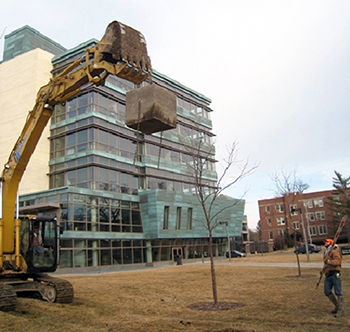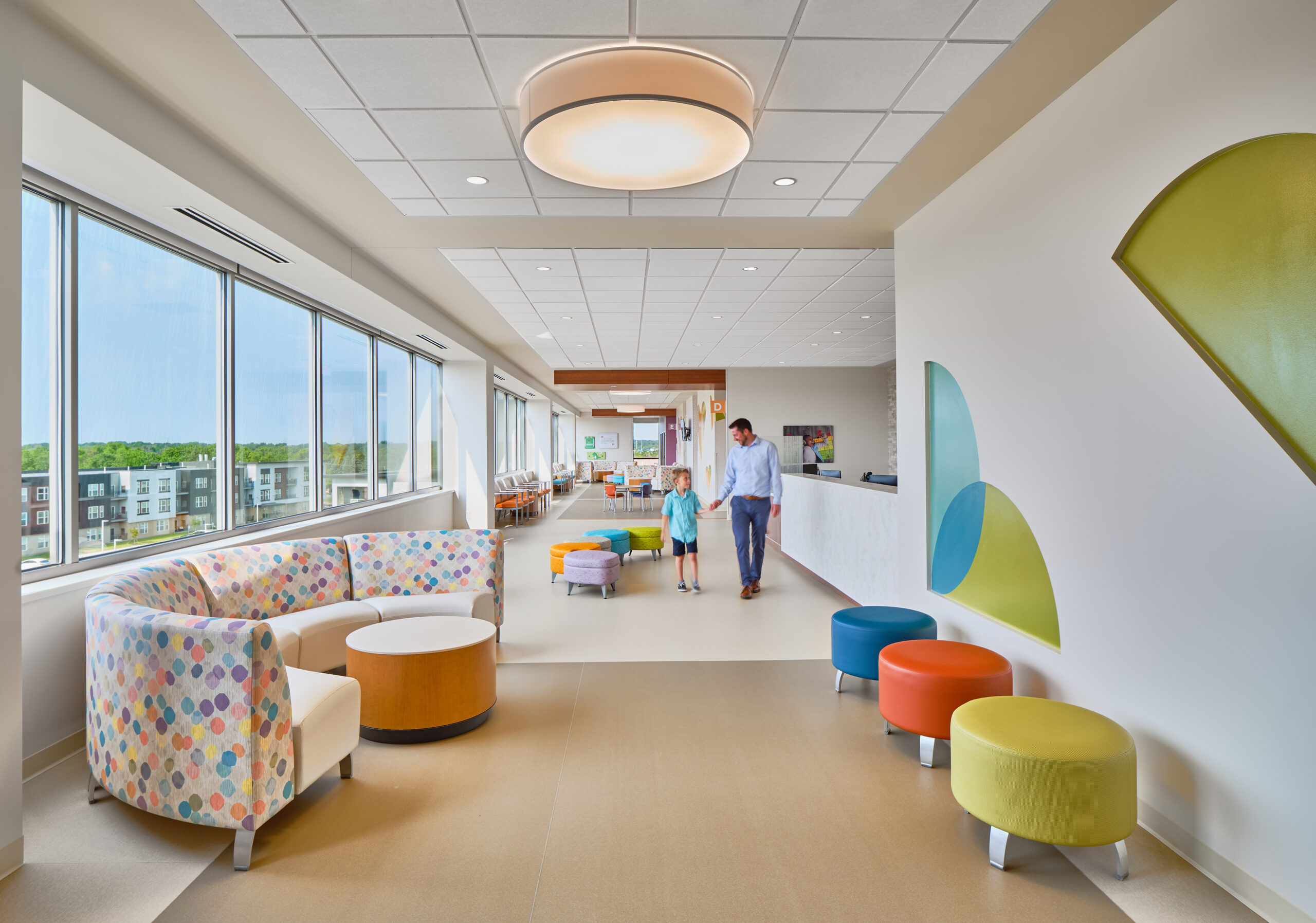 Until recently, vibration sensitive equipment like MRIs and electron microscopes were typically located on grade-supported slabs, often in the hospital’s basement. This type of equipment is now being used on higher floors so it can be closer to patients. Above-grade building floors are more flexible and are more prone to vibrations, which may interfere with the equipment’s efficiency.
Until recently, vibration sensitive equipment like MRIs and electron microscopes were typically located on grade-supported slabs, often in the hospital’s basement. This type of equipment is now being used on higher floors so it can be closer to patients. Above-grade building floors are more flexible and are more prone to vibrations, which may interfere with the equipment’s efficiency.
The suppliers of sensitive equipment generally specify limits on the vibrations of the floor on which the equipment is to be located. Unfortunately, the exact equipment items to be placed in a facility are often not known early in the facility’s design process. Because of this, a set of generic vibration criteria has been developed to allow designers to classify the sensitivity of areas in the building and thereby to enable the design of suitable structures.
These generic criteria are given in terms of VC curves that indicate limits on the floor vibration velocity. The 2010 Guidelines for Design and Construction of Health Care Facilities, published by the American Society for Healthcare Engineering, recommends that vibrations of floors in patient rooms, ORs and treatment rooms be limited to 4,000 micro-inches per secondcolloquially called “mips”) and that floors in administrative and public circulation areas be limited to 8,000 mips. To provide some perspective, the threshold of perception of the most sensitive humans is about 4,000 mips. Sensitive equipment typically has criteria that are much lower than human perception. For example, 2,000 mips is often specified for laboratory and animal research areas and limits as low as 500 mips are used for MRI spaces. The key to a successful design is to identify the vibration sensitive areas in the building and to provide the structure necessary for obtaining appropriate vibration environments.
One aspect of new construction that should not be overlooked is the potentially adverse effect of construction-related vibration on nearby facilities, particularly those that contain sensitive equipment or operations. For example, the construction of a new 245,000-square-foot, nine-story ambulatory care center next to Boston Medical Center raised concerns about interference of construction-related vibrations with ongoing hospital activities. Particularly severe vibrations are known to result from demolition, soil excavation and pile driving. In this situation, preconstruction testing with representative equipment is the best way to quantify the expected impact of construction activities. The results can be used to determine which areas may or may not be affected during construction and to develop mitigation strategies. These may involve scheduling, selection of construction methods and equipment, providing sensitive items with supplemental vibration isolation and real-time monitoring of vibrations in critical areas.
Two case studies are explored. At the New England Baptist Hospital, vibration measurements were also carried out in sensitive areas of the hospital before and during a series of representative construction activities. The measured vibrations were compared to criteria for MRIs, CT scanners and operating rooms in order to evaluate the potential impacts. At Boston Medical Center, real-time vibration monitoring of sensitive areas was used during construction, with automatic alarms sent to project and hospital personnel if any preset vibration limits were exceeded. This allowed the hospital and construction personnel to anticipate complaints from staff and to mitigate the construction activity, if necessary. At New England Baptist Hospital, the tests and data were used to educate the hospital staff and to devise strategies that permitted the hospital to continue carrying out its work during construction without continuous monitoring.
Remote monitoring — where measurement systems are installed in critical areas and their data are observed at other convenient locations — has been found to be especially useful not only for coping with construction, but also for evaluating the suitability of sites being considered for sensitive activities. As an example of the latter, remote monitoring is being used at the University of Connecticut Health Center to determine whether a selected location on a higher floor is suitable for relocation of its Center for Advanced Reproductive Services. In cases such as the ones illustrated here, remote monitoring can be a cost-efficient tool in view of its capability to provide data and alarms in real-time and thus to protect hospital environments from undue vibrations — all without the need to have specialists on site for extended periods.
Marc Newmark is a senior consultant in noise and vibration at Acentech Inc., a multi-disciplinary acoustics, audiovisual systems design and vibration consulting firm with offices in Cambridge, Mass., Trevose, Penn., and Los Angeles, Calif. For more information, please visit www.acentech.com.





